After the Rim fire, a new worry: water
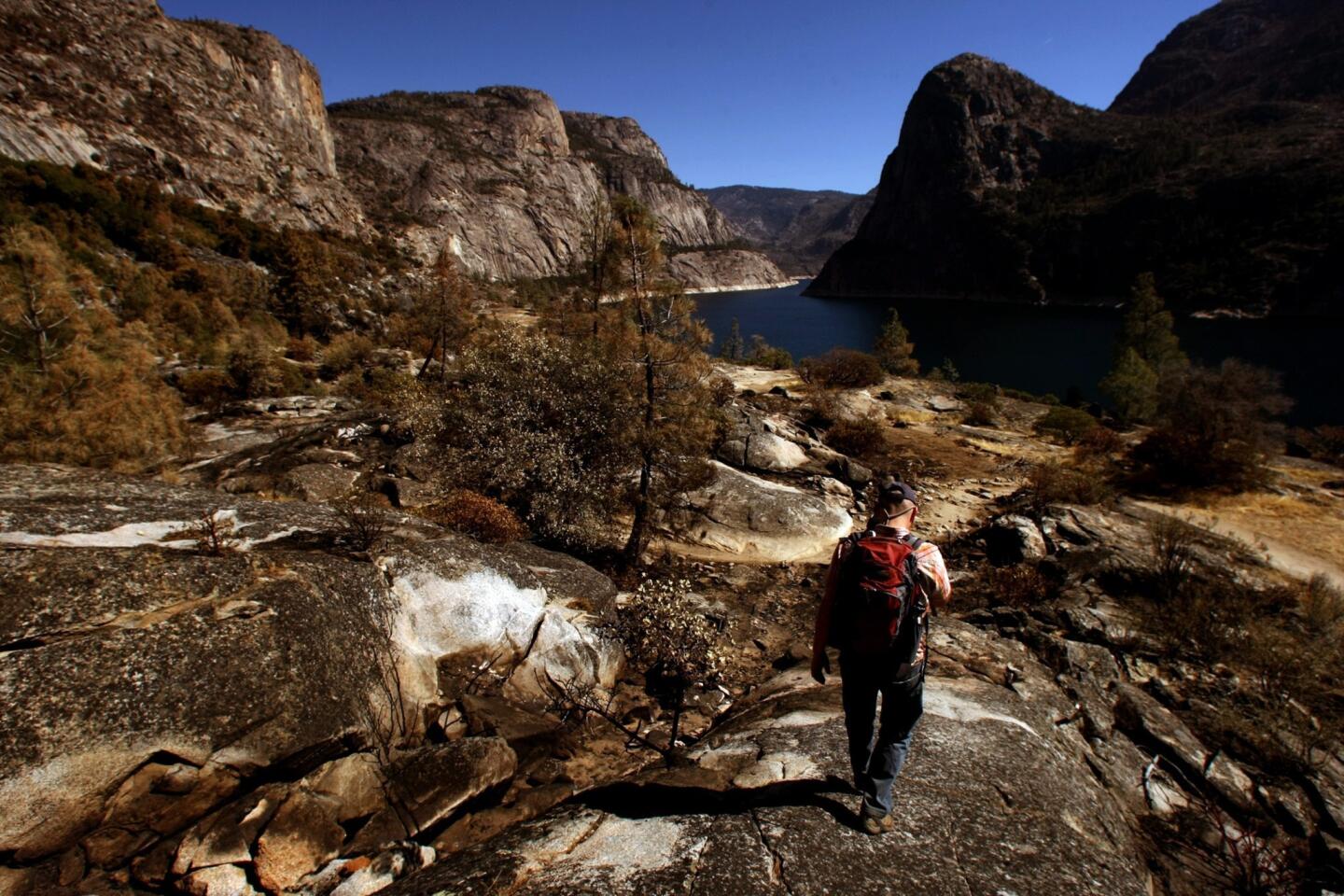
William Sears, a science and policy analyst with the Hetch Hetchy Regional Water System, walks along the Hetch Hetchy Reservoir. San Francisco officials are closely monitoring hydroelectric facilities, soil conditions and water quality in and around reservoir, where the Rim fire crept around the edges of the city’s drinking water supply and made some areas more prone to erosion. (Genaro Molina / Los Angeles Times)
Steep Sierra Nevada slopes burned in California’s third-largest wildfire are primed for flooding and debris flows in a big winter storm.
See story
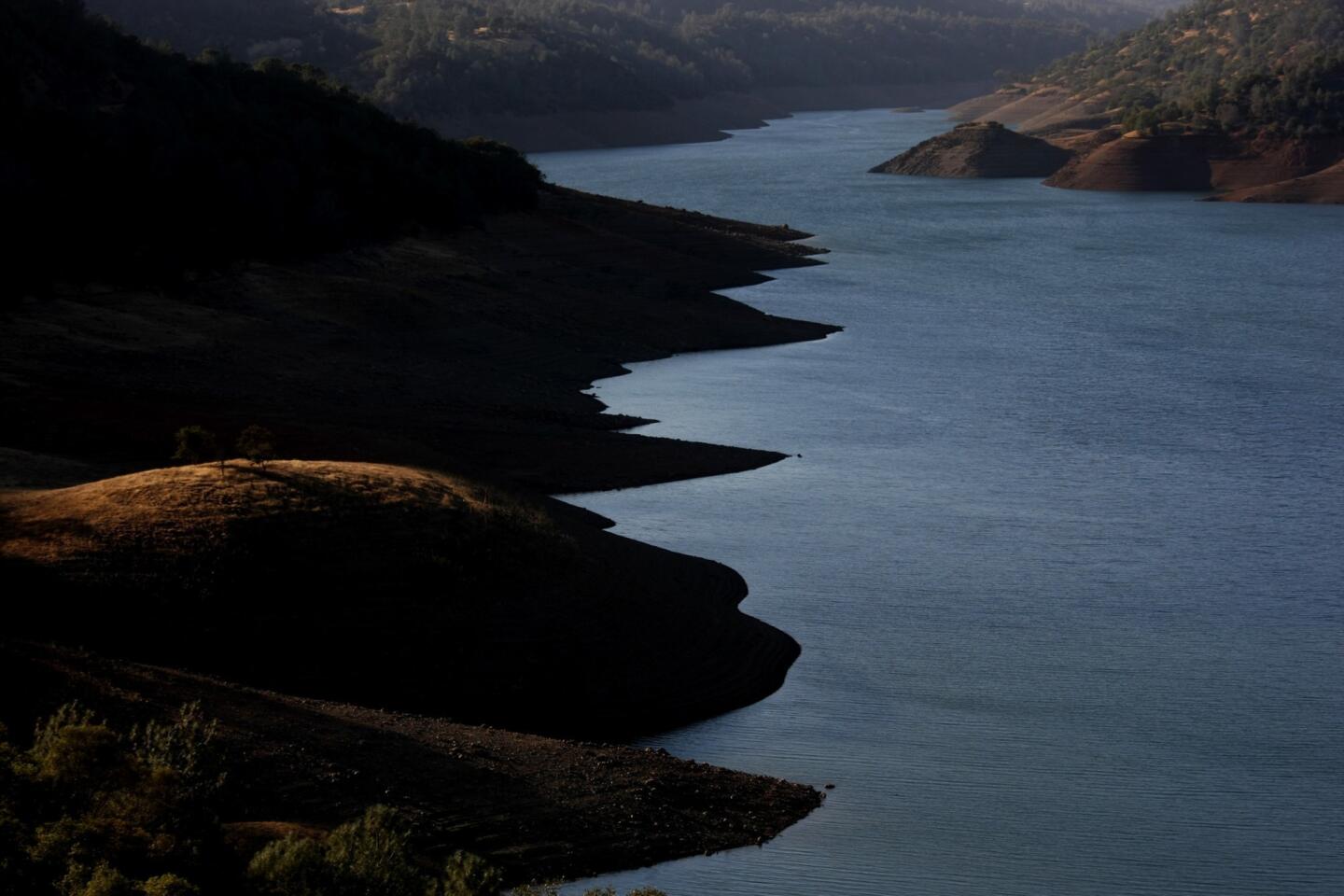
The soil around the Hetch Hetchy Reservoir -- which stores 85% of the drinking water supply for 2.6 million people in the Bay Area -- wasn’t scorched as badly as initially feared. (Genaro Molina / Los Angeles Times)
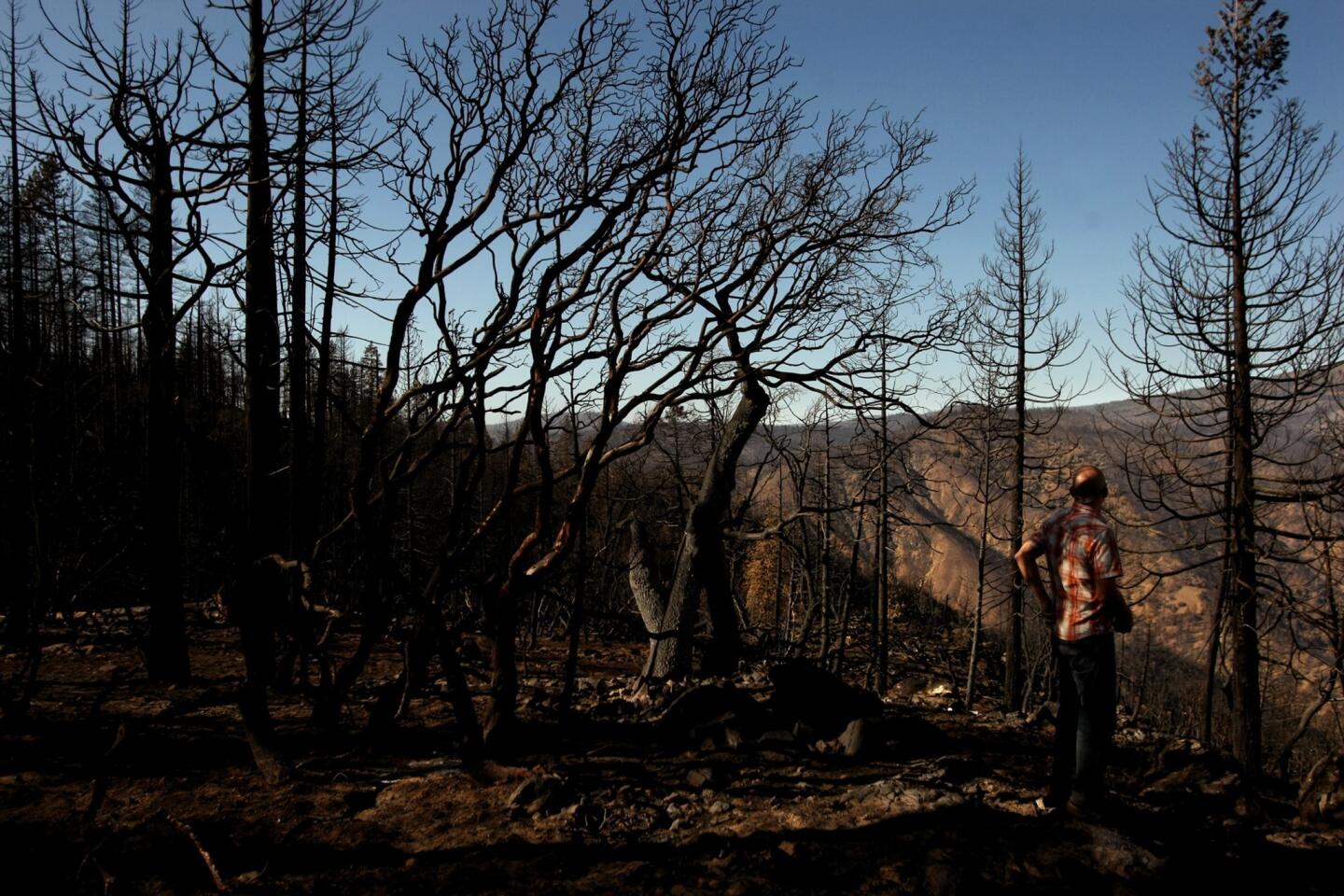
Hetch Hetchy analyst William Sears looks through blackened trees at the Tuolumne River. Over 90% of the Rim fire burned in the river’s watershed, where more than 2,600 miles of streams cut through steep, now-burned slopes of the Sierra Nevada. (Genaro Molina / Los Angeles Times)
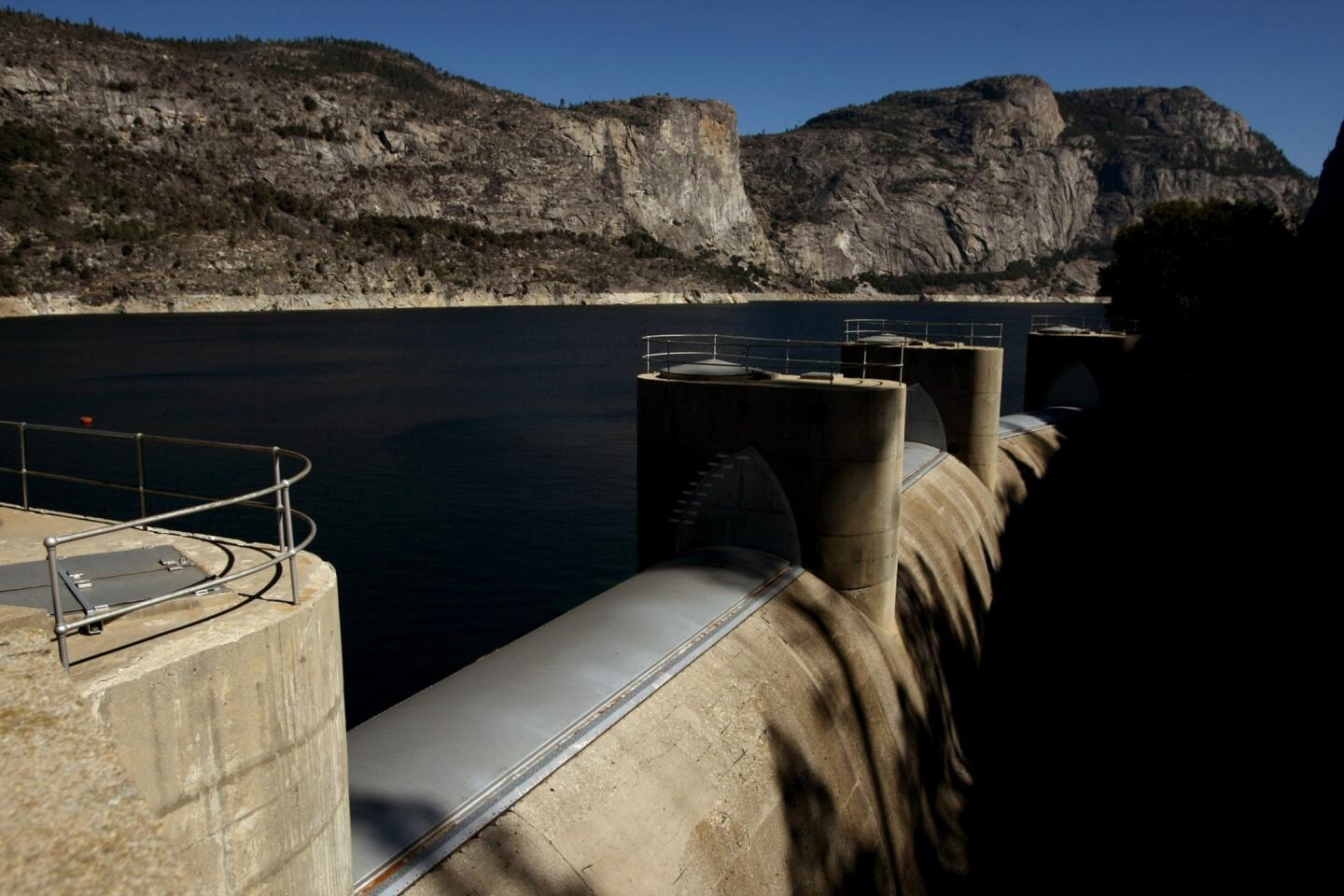
The Hetch Hetchy Reservoir is framed by the O’Shaughnessy Dam in Yosemite National Park. The U.S. Forest Service has rushed to prepare culverts, stabilize roads and trails, and put mulch and straw bales over burned soil to keep it from sliding away in heavy rain. (Genaro Molina / Los Angeles Times)
Advertisement
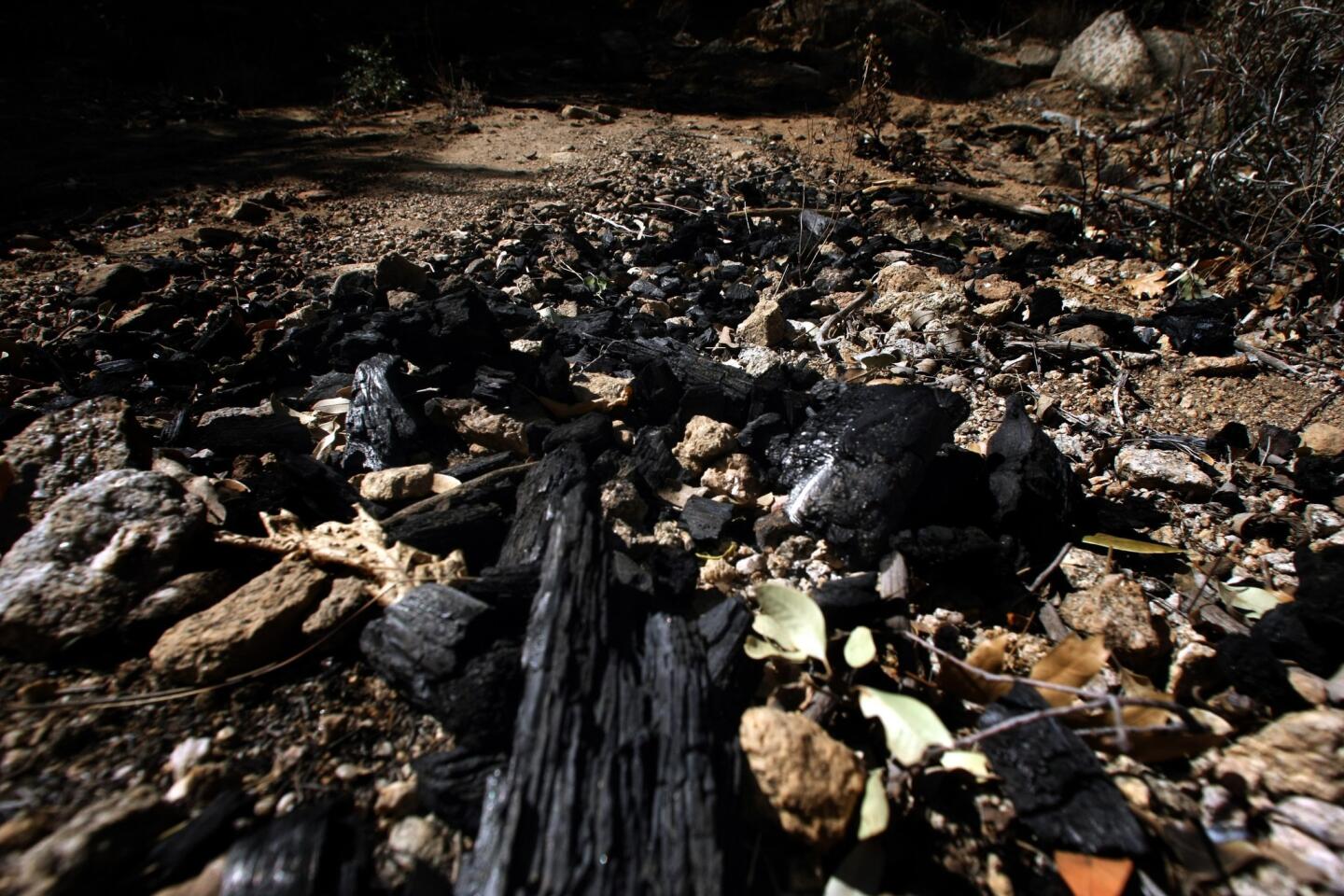
Charred debris from the Rim fire makes its way toward the Hetch Hetchy Reservoir after a recent rain. (Genaro Molina / Los Angeles Times)
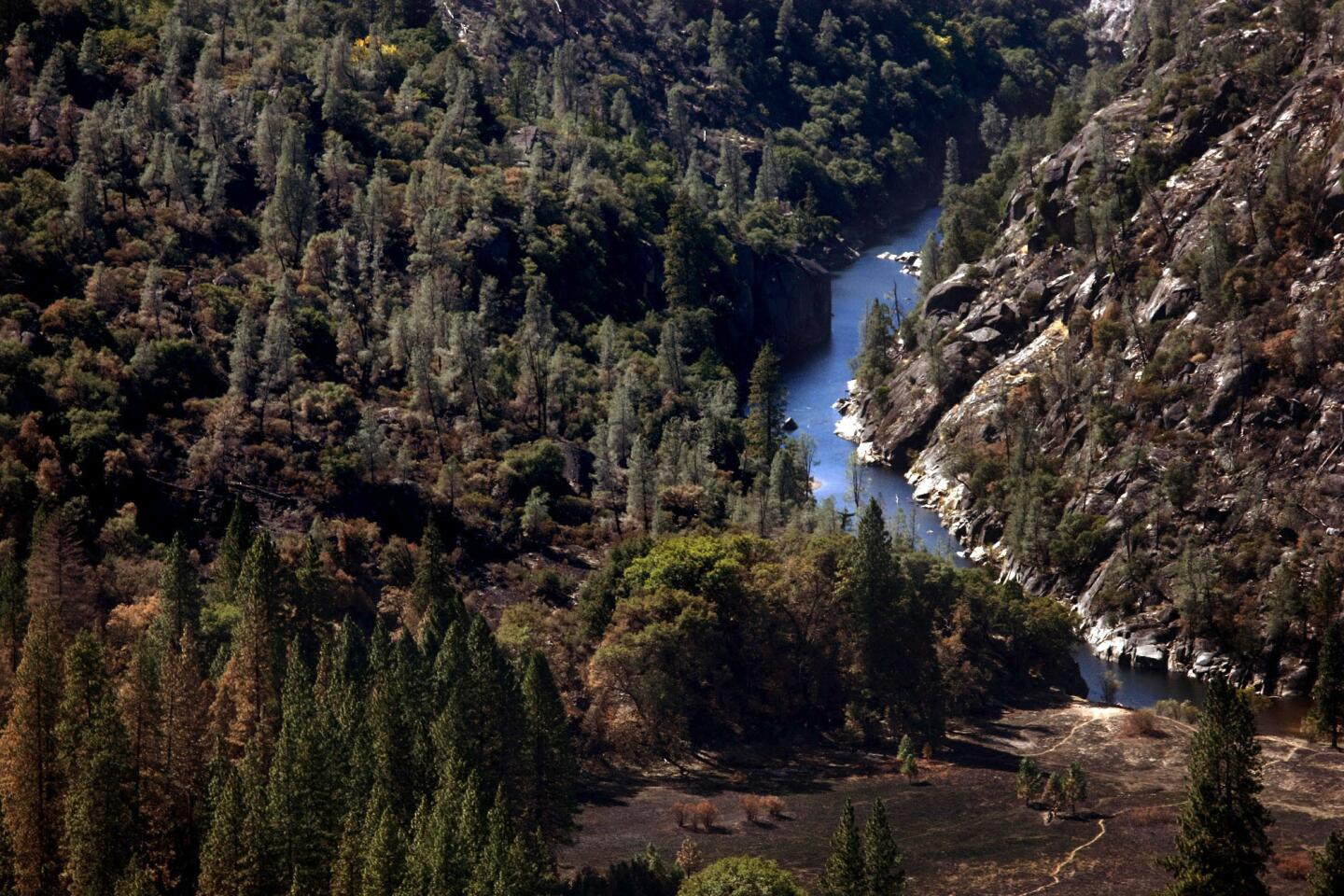
The Turlock Irrigation District has purchased extra booms to capture logs and woody debris that the Tuolumne River is likely to dump into 26-mile-long Don Pedro Reservoir, which stores water to irrigate more than 200,000 acres of Central Valley farmland. (Genaro Molina / Los Angeles Times)
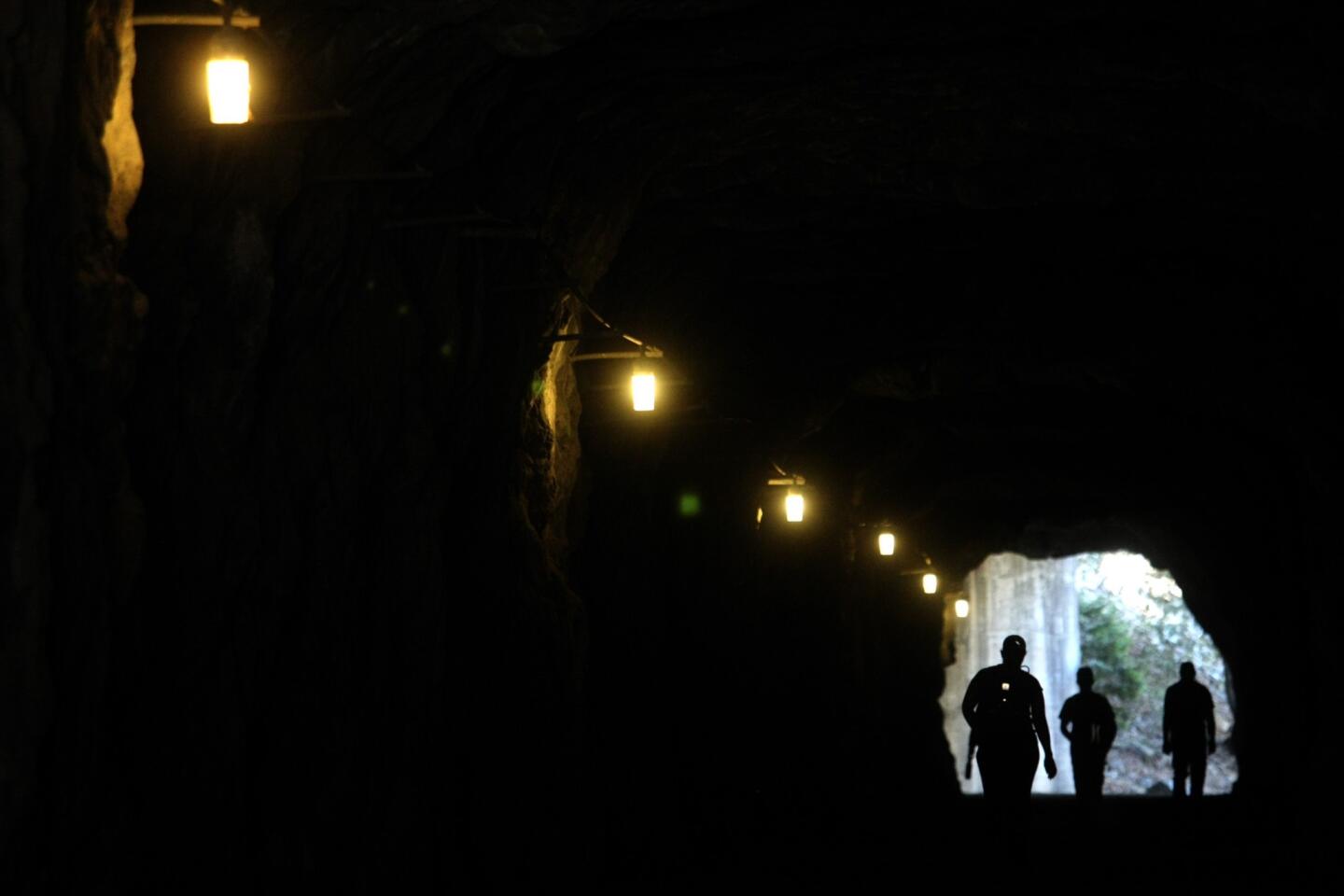
Alison Kastama, left, spokeswoman for the Hetch Hetchy Regional Water System, and Hetchy analysts William Sears and Chris Graham walk through a tunnel that leads to a hiking trail along the Hetch Hetchy Reservoir. Rangers have closed roads and campgrounds and posted signs to warn of falling rocks and trees. (Genaro Molina / Los Angeles Times)







